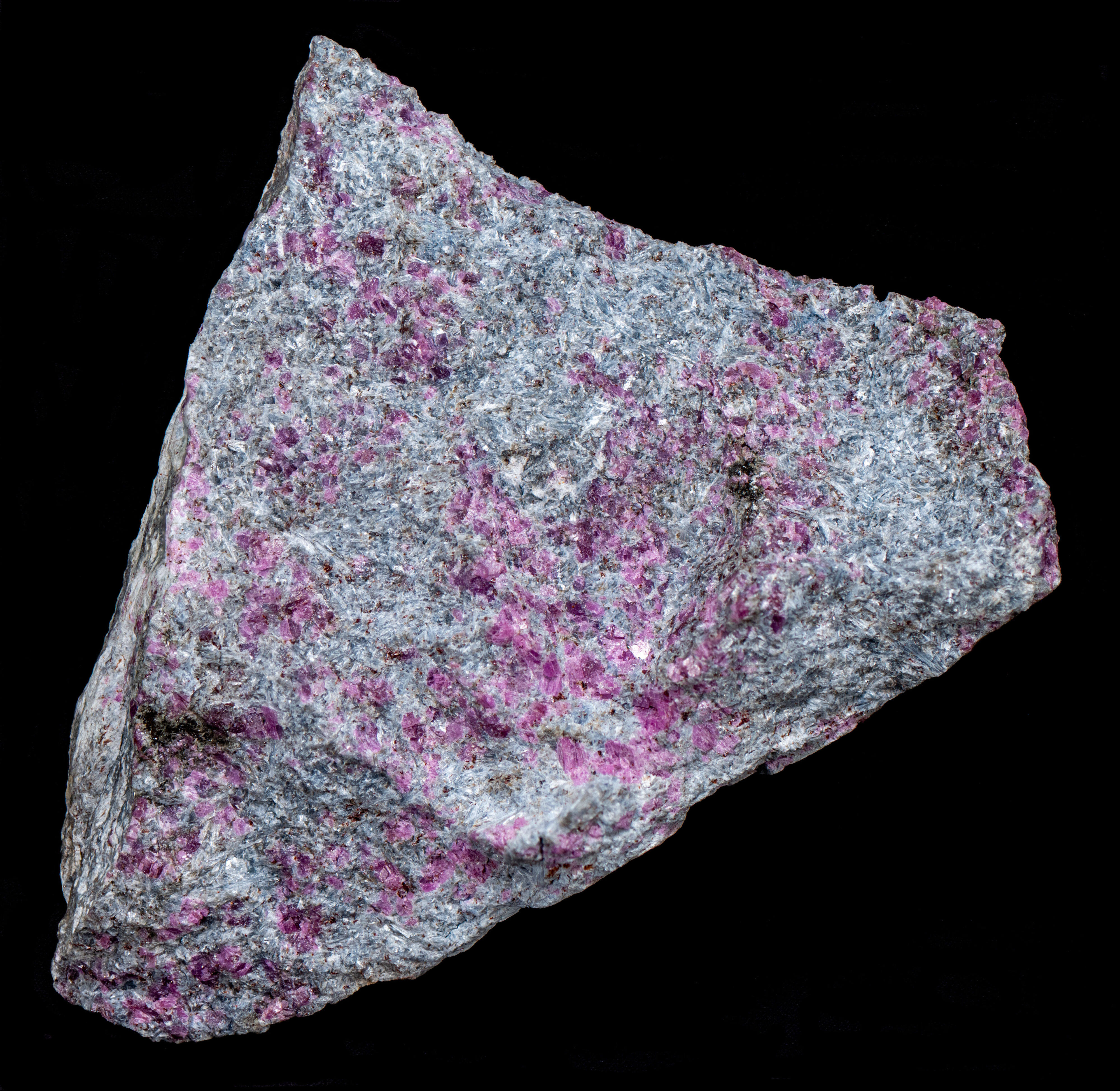Ruby and Kyanite from India
Contributed by: Michael Crawford
Date: Jun 11th, 2025
Locality: Mysore District, Karnataka, India (See on Mindat)
Size: 9 x 12 cm
Description:
Kyanite (Al2(SiO4)O) and red corundum var. ruby (Al2O3), from Mysore, India exhibit fluorescence under longwave UV illumination. The fluorescence emitted by ruby is significantly brighter than that of kyanite. Neither mineral fluoresces under midwave or shortwave UV light.
Longwave emission spectra reveal sharp peaks in both ruby and kyanite. Ruby has a pronounced peak in the visible region at 692 nm, with additional smaller peaks at 679 nm and 713 nm. Kyanite displays sharp peaks at 688 nm and 705 nm. These sharp peaks are attributed to chromium (Cr3+) ions substituting for aluminum (Al3+). While kyanite fluorescence is most intense in the near-infrared spectrum, which is imperceptible to the naked eye, it also features a broad peak at 755 nm in the near-infrared spectrum. This fluorescence is also activated by chromium but occurs at different aluminum sites within the kyanite crystal lattice.
The final two images depict the near-infrared fluorescence of both ruby and kyanite. Historically, Kodak produced color infrared film capable of capturing green and red visible light as well as near-infrared light, compatible with any 35mm film camera. However, with the advent of digital cameras, the ability to take color infrared photographs was lost. Digital cameras can be modified to capture infrared images using specialized external filters on the lens. The first image simulates what would have been captured using color infrared film, consisting of images of green visible light, red visible light, and near-infrared light assigned to blue, green, and red respectively. In this image, ruby appears yellow-green and green, while kyanite appears red.
The second infrared image is a composite of three narrow-band, near-infrared images centered at wavelengths of 720 nm (red), 770 nm (green), and 860 nm (blue). The locations of the bandpass filters are indicated on the emission spectral plot. The 720 nm image captures fluorescence from both ruby and kyanite, whereas the 770 nm and 860 nm images capture fluorescence predominantly from kyanite. The resultant false-color image depicts ruby as orange-red and kyanite as bluish white.
Summary of luminescence responses:
Corundum var. Ruby (Mindat) (RRUFF)
- Fluorescence under Longwave (365nm LED) UV light: Red
- Fluorescence under Longwave (365nm LED) UV light: Red





